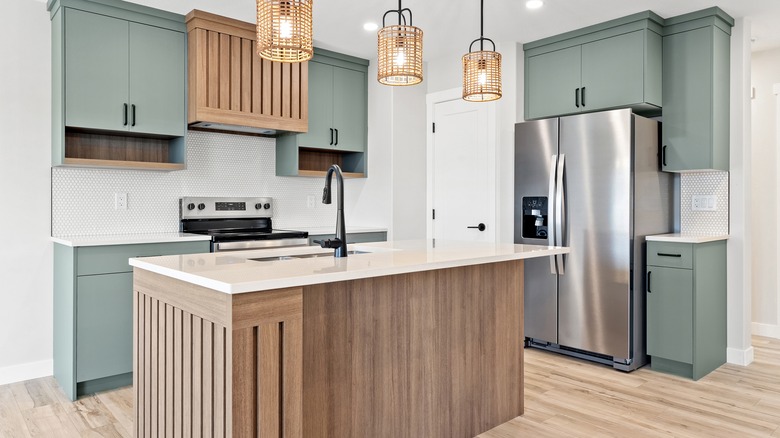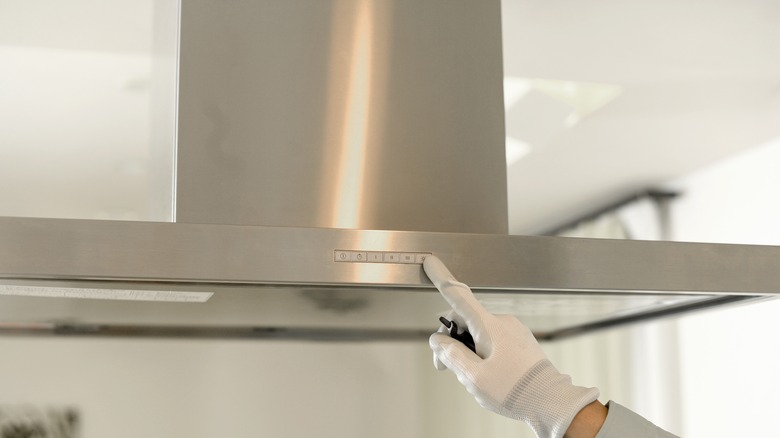Should Your Kitchen Island Have A Sink Or Hob (Or Neither)?
When designing a new kitchen or renovating an existing one, many decisions revolve around the kitchen island. What shape best fits the space, for instance – islands don't always have to be rectangular – and which is the best kitchen countertop finish are common questions. Homeowners may also want to install a sink or hob in the island, but is either a good choice? For some expert insight, Food Republic reached out to Drew Mansur, co-founder and director of TileCloud, who offered points to consider before opting for one of these features.
"If you entertain often, adding a hob or sink on the kitchen island creates a great space for [socializing] — especially for larger kitchens that are frequently used," Mansur said. The presence of a hob, which is a cooktop built into an island, enables a sociable chef to face guests who are seated at the island, rather than having their backs to the room while cooking at a conventional range. An island sink similarly makes it easy to wash dishes and prep food without being cut off from company.
However, various factors can make adding a sink or hob an unwise choice. "If you have a more compact kitchen in a household of less people, it doesn't make sense to reduce the already limited amount of countertop space that you have," Mansur added. In fact, you may want to think twice about having an island at all if your kitchen is on the cozy side. A hob can also be a poor choice in a busy household with small children, as its central placement puts hot stove elements and grease splatters in closer proximity to kids.
Points to consider when choosing between a sink and a hob
Your kitchen layout should be carefully considered before installing an island sink or hob. "These [kinds] of kitchen upgrades should make the layout easier to use, not complicate it," Drew Mansur advised. For instance, would adding an in-island hob or sink disrupt the kitchen work triangle? If the traffic flow between your sink, fridge, and stove — which should form the three points of a triangle — would be broken up or obstructed by the addition you're considering, it's best not to proceed.
Plumbing and ventilation needs should also be carefully factored in. Adding either feature is not a simple or inexpensive matter. "A sink on a kitchen island –- and anywhere -– needs direct access to water and waste lines, so plumbing significantly influences the decision to house a sink," Mansur cautioned. If your island's location doesn't already have the proper plumbing, a great deal of work is required to create those connections. Make sure your desire for the feature is strong enough to justify the extra work and expense.
Similarly, when adding a cooktop, "[ventilation] needs to be the first point of consideration when it comes to hobs in kitchen islands," Mansur noted. "This is because the range hood (exhaust) needs to be able to vent effectively, otherwise a whole range of issues beyond lingering cooking smells can occur. Health issues (i.e. damage to lungs, eye and skin irritation, etc.) and damage risk to your interior over time come from poor air quality and built-up moisture, so if you can't guarantee installing a new ventilation system, steer clear of adding kitchen island hobs."


